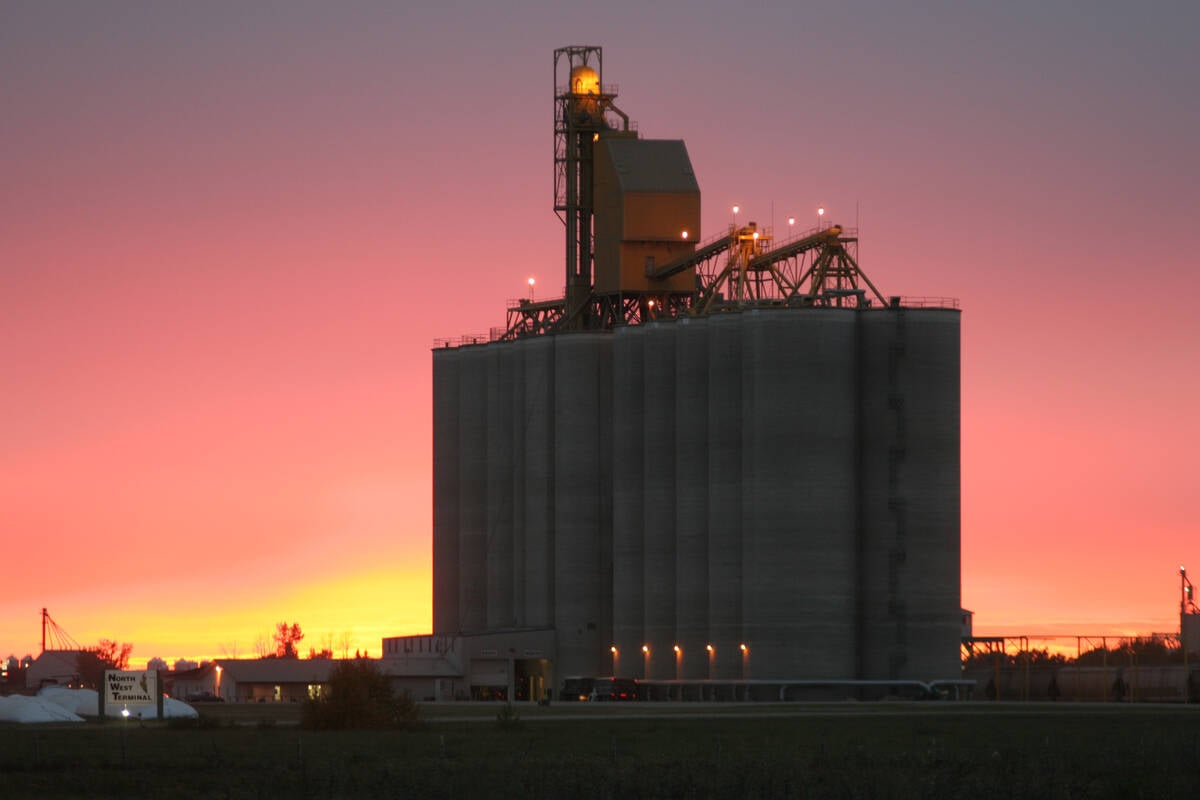Maple Leaf Foods is giving itself 10 years to phase out the use of gestation stalls on its hog operation and make the transition toward open group housing.
Gestation stalls, which have come under fire from animal welfare activists in recent years, confine pregnant sows for as long as 90 days at a stretch.
“We have been reviewing and evaluating different methods of alternative housing,” said Jeanette Jones, director of communications for Maple Leaf Foods.
“At this time, we haven’t determined exactly how that will be done. Will we need to retrofit barns or build new ones? A lot of those decisions are yet to be made.”
Read Also

Bunge to acquire North West Terminal Ltd.
Bunge plans to buy the assets of North West Terminal in Unity, Sask.
Proponents say the stalls eliminate bullying by more aggressive animals and allow easier handling and feed control.
Opponents claim the practice is inhumane because it restricts animals’ movements and causes stress, leg injuries and bone deterioration from lack of exercise.
Maple Leaf, which is consolidating its hog operations, made the announcement on the heels of a decision last week by American pork processing giant Smithfield Foods to begin phasing out the stalls over the next decade.
Under its consolidation plans, the company will move to 100 percent ownership of 45,000 to 50,000 sows within 18 months. As of last year it owned 120,000 sows in a variety of partial and whole ownership arrangements.
Jones said the company will continue to use farrowing crates, which prevent sows from laying down quickly and crushing the piglets. The animals are kept in the crates for about 18 days during lactation.
The cost of phasing out gestation stalls will be significant, said Jones, but the final bill will ultimately depend on the model chosen and whether the company will retrofit existing barns or construct new ones.
Chris Lawson, a production specialist who is also chair of Elite Swine’s animal welfare committee, said the company, which is
Maple Leaf’s hog production arm, now keeps all of its sows in stalls for 80 to 85 days of the 115 day gestation period.
Under the new system, the animals will be loose housed for about 70 percent of the breeding cycle.
The switch will need to be slow, he said, because apart from structural changes to barns, workers will have to be trained in new handling and management systems, such as how to mix groups and prevent dominant sows from injuring others.
“These changes will only be in facilities in which we have 100 percent ownership. So until we know where things are at, we can’t really plan for exactly what we want to do,” he said.
Lee Whittington, manager of information services for the Prairie Swine Centre in Saskatoon, said retrofitting gestation stalls is unlikely to be cheap or easy.
“A completely slatted barn might not be that big of a deal, but if you have to start tearing up floors and changing manure management, that would be extremely costly.”
Behind the sow stalls in most barns is a grate for feces and urine to fall through. Simply tearing out the old stalls and putting in open housing would mean that a worker would have to go into the pen and shovel all the dung into the grates.
“If you opened it up so that the sows could walk around and manure wherever they wanted, you’d end up with quite a mess,” he said.
“To renovate it overnight wouldn’t be very feasible. That’s why both Smithfield and Maple Leaf have given themselves a good long time to take a look at it.”
The other reason sow gestation stalls were invented, besides reducing losses from fighting, is that they allow feed intake to be carefully monitored.
If allowed to self-feed, most sows will quickly become obese, he said. Electronic collar and ear tag systems that identify specific animals and dole out the appropriate ration are expensive: about $15,000 for a single feeder with a 55-sow capacity.
The EU will ban prolonged use of gestation stalls in 2013. Great Britain, Denmark and Sweden have already outlawed the practice.
Some gestation stalls now popular in Europe allow the animals to walk in and back out freely, which eliminates some of the problems. A number of Hutterite colony hog operations have installed such systems, said Whittington.
Straw-based hog operations, which were common before the shift to liquid manure handling systems, are now making a comeback.
But the main obstacles include biosecurity concerns, the possibility of rodent problems and the difficulty in retrofitting existing barns to straw bedding.
Florian Possberg, chief executive officer of Big Sky Farms Inc., said all of his hogs lived in group housing when he started with a 60-sow operation in 1975.
“We moved towards gestation stalls for health, welfare and the well-being of our animals,” he said.
“We haven’t decided at this point whether we’ll phase them out in our existing units, but there’s a pretty good chance that we won’t build any new units with gestation stalls because the public winds seem to be blowing in that direction.”
Eighty percent of the hogs in his 47,000-sow operation now live in stalls, and he doesn’t anticipate a complete changeover unless the company can find convincing evidence that group housing is better for the animals.
Vicki Burns, executive director of the Winnipeg Humane Society, said she was “very impressed and grateful” to Maple Leaf for “going in the right direction.” Her organization will now increase pressure on the remaining hog industry hold-outs still using gestation stalls.
“We think it would be very wise to encourage the industry to move towards the straw-based housing rather than continuing to rely on the liquid manure systems,” she said.
Such a system would largely resolve concerns about animal welfare, odour and water contamination, she added.














